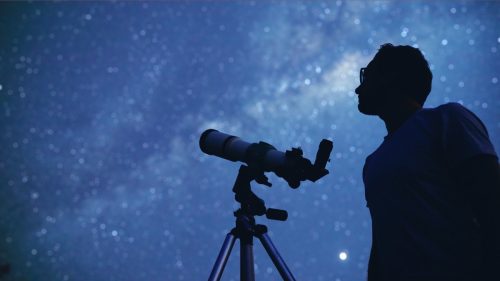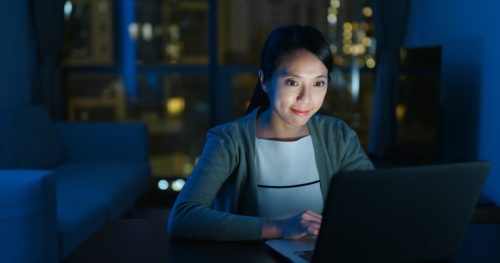A Massive Star Just Exploded, and You Can See It for Yourself—Here’s How

Looking up at the night sky is simultaneously calming and overwhelming. It’s a clear indicator of just how vast the universe is, while the moon and stars can also provide a comforting constant. But if you’re ready to move past the familiar and learn more about the celestial bodies that dominate the night sky, you’re in luck: There’s currently a massive star explosion that you can see for yourself. Read on to find out how and when astronomers recommend viewing this stunning supernova.
READ THIS NEXT: NASA Says Solar Eruptions Are Increasing—Here’s How That Could Affect Us.
The exploding star was first discovered on May 19.

Amateur astronomers rejoice: A new supernova (essentially an exploding, dying star) was discovered in the Pinwheel Galaxy. Also known as M101 or Messier 101, the spiral Pinwheel Galaxy is roughly 21 million light-years away from Earth, according to Scientific American.
The supernova, formally named SN 2023ixf, was first spotted on May 19 by supernova-hunter Koichi Itagaki, who is based in Yagamata, Japan. The existence of the supernova was confirmed by the Zwicky Transient Facility (ZTF) telescopes in California the next evening, Forbes reported.
“It took me about five minutes to confirm that it was a supernova,” Itagaki told Scientific American. “The discovery was made in bad weather with lots of clouds. We were lucky.”
Scientists are thrilled about this exciting discovery.
Interestingly enough, SN 2023ixf is the closest supernova to Earth detected in the past five years, and the second closed in the past 10 years, according to the National Aeronautics and Space Administration (NASA). On May 22, the Hubble Space Telescope announced that it began studying the supernova—and scientists are excited about any “new clues” that may surface.
As Scientific American explains, the event is a type II supernova, which occurs when a humungous star “runs out of fuel.” In other words, this star—which is many times the size of Earth’s sun—couldn’t support its own weight and collapsed into either a black hole or a neutron star. According to Space.com, as a result, there’s a burst of both light and energy that was first visible from Earth last Friday.
Astronomers stress that SN 2023ixf can help bolster knowledge about supernovas, as it’s so “close” to Earth and was discovered before reaching its peak brightness, per Scientific American.
“It’s going to probably be potentially the most detailed supernova studied in terms of the rise and then the decay and all the different stages of the supernova itself,” Yvette Cendes, PhD, astronomer at the Center for Astrophysics | Harvard & Smithsonian, told Scientific American.
Here’s how you can see it for yourself.

If you’re interested, Sanjana Curtis, astrophysicist at the University of Chicago, said you can definitely check out the supernova.
“It’s a rare glimpse at a very spectacular and dramatic event that’s happening—in astronomy terms—nearby, and I don’t think people should miss it because it might not happen again for a decade,” Curtis told Scientific American. “So if you have a telescope, you want to point it at M101 right now.”
According to Scientific American, the Pinwheel Galaxy—and the supernova—are now visible when using a “modest backyard telescope.”
The Pinwheel Galaxy is also home to the Big Dipper, in the constellation Ursa Major, which an amateur astronomer can likely spot. To locate the supernova, find the Big Dipper’s “handle,” which is comprised of two stars, Alioth and Mizar. If you continue the line beyond Mizar, you should be in the “general vicinity” of M101, according to Space.com.
From there, more experienced stargazers might be able to spot the supernova, as it’s out-of-place on one of the galaxy’s spiral arms.
You can also watch a live stream.

There’s no need to panic about setting up your telescope in time, as scientists confirmed that the supernova will be visible for the next few months, per Scientific American.
But if you don’t have a telescope, that’s not a problem, either. According to Space.com, the Virtual Telescope Project is live-streaming the developing explosion for free on its website and on YouTube. The event begins at 6 p.m. Eastern Daylight Time (EDT) tomorrow, May 25.